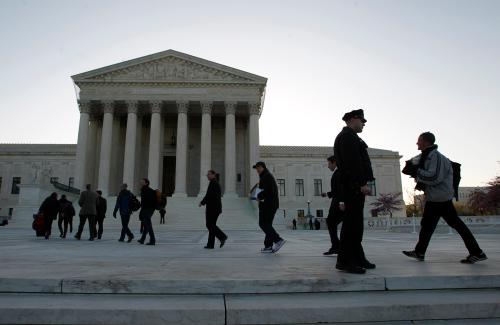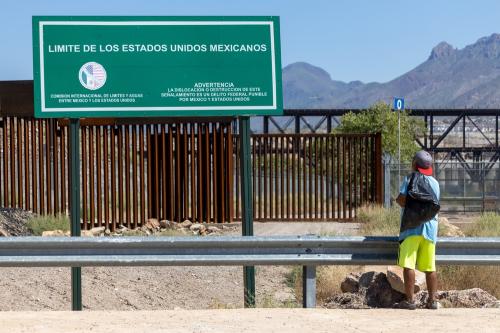Immigration will be in the news for a while. Like many of you, I’ve been reading the news, polls, and research on immigrants in western democracies. My conclusion: of all the gaps between perception and reality in areas of public policy, one of the widest ones may be in matters related to immigrants.
What researchers find
The research findings are amazingly unequivocal: immigrants are not more likely to be involved in crime than the native born. Studies find that first-generation immigrants invariably engage in less violent crime than the native born. Part of the reason is that immigrants tend to have more stable family structures (two-parent households, fewer out of wedlock births etc.). For the U.S., take a look at this paper by Ousey and Kubrin (2009). Pages 465-467 have a good summary of their findings.
Calamur’s 2016 article in The Atlantic is an excellent survey for readers who don’t have the time to read the referred articles. He confirms the finding that first-generation immigrants almost always have lower crime rates, in both the U.S. and in Europe (while acknowledging that research has found it harder to distinguish the behavior of legal versus illegal first-generation immigrants.)
After the first generation, the findings in the U.S. and Europe reveal a different story. Calamur cites a telling excerpt from the Oxford Handbook of Crime and Criminal Justice:
Second-generation immigrants typically have higher crime rates than first-generation immigrants. In the U.S. context, however, most second-generation immigrants continue to enjoy lower crime rates than the native-born population. In stark contrast, research findings in European countries indicate that some second-generation immigrant groups have crime rates that drastically exceed those of the native-born population.
This finding should give the Trump administration pause. If the U.S. begins to treat immigrants the way Europeans have (think France, not Sweden), shouldn’t we expect to see later-generation immigrants in New York become less like their law-abiding parents and more like second-generation immigrants in Paris?
What people think
There are no definitive findings on what people think, but there are warning signs.
In Europe, research published by the Center for Economic Policy Research has found an “alarmingly high” and persistent correlation between support for far-right parties and the share of immigrants in the population.
In the U.S., this correlation appears to have more variance. A 2014 Pew Charitable Trust report showed substantial differences in perceptions among different groups. At the two extremes, steadfast liberals believe immigration (and government) is good, while steadfast conservatives think that immigration (and government) undermines both fiscal balance and family values. In between, opinions are more fluid. Immigration is generally seen as good for business. The most influential group may have been the “hard-pressed skeptics”—almost 15 percent of the registered voters who voted for President Obama in 2012, but who went for Trump in 2016.
Figure 1: Perceptions of immigration

Needed: more information, and loads of patience
I recommend reading the U.S. President’s executive order on immigration. If you read the first part carefully, you can tell what the new team really thinks about immigrants (or at least what it wants the public to think that it thinks). You can find the text here, along with comments from National Public Radio correspondents.
When it comes to immigrants, most people appear ready to believe what they are told. Giving the public accurate information about immigrants helps to make perceptions conform closer to what researchers find. In Japan, an experiment described by Facchini, Margalit, and Nagata (2017) shows that giving people information about the economic effects of immigration increases their support for it by between 43 and 72 percent.
Spreading facts will help for sure, but progress won’t be quick. The experience from California described by Emily Badger in The New York Times is encouraging, though not for the impatient. “California lashed out at diversity before embracing it,” she writes. The state went from disallowing the Chinese to own property and interning the Japanese and voting against bilingual education to broad and deep support for immigration today. But it took almost a century.
Sometimes, rules should be bent
If you have little more time, read this beautiful editorial in the Charlotte Observer by Fritz Mayer, my colleague at Duke’s Sanford School of Public Policy. It is about his father Paul and his grandfather Fritz, both of whom sought refuge in the U.S. in the 1940s. I won’t give away their stories.
The Brookings Institution is committed to quality, independence, and impact.
We are supported by a diverse array of funders. In line with our values and policies, each Brookings publication represents the sole views of its author(s).







Commentary
Future Development Reads: Immigration and crime in the United States, Europe and Japan: What the research shows, what folks believe, and what governments should do
February 3, 2017